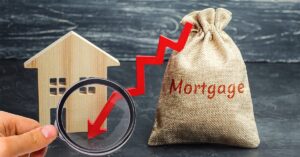Home construction heated up in the latter half of 2020 as housing starts edged above an annualized rate of 1.5 million units. That’s enough homes being built to accommodate growth while replacing old or torn-down stock.
“I feel really good that those housing-start numbers are likely to continue for the next six to 12 months as builders and developers try to take advantage of the strong demand environment,” said Ali Wolf, chief economist for Zonda, a real estate consulting company that provides data on new homes.
Wolf spoke to Scotsman Guide about the state of housing construction and what could stymie growth in the future. She also talked about how long it will take to make up for years of underbuilding.
Do you expect housing-construction momentum will continue?
We’ve been doing a builder survey since March (2020) and have been asking, ‘What are your biggest concerns?’ Their No. 1 answer is running out of lots and land. Their No. 2 answer is land costs. While we believe there’s a lot of enthusiasm on both the builder and developer side, we also know that there are some constraints. Down the list, too, we’re seeing supply-chain issues. It’s hard for builders to get their hands on dishwashers and refrigerators. We know that costs have gone up.
Has the deurbanization trend helped with the availability of land?
The [traditional] idea of a quote-unquote suburb was 15 to 20 minutes from the central business district. Since the pandemic, we’re seeing people willing to move 25, 30, 40 minutes away. That is where there’s more developable land. With today’s work-from-anywhere environment, that land has now become a hot commodity.
Impact fees and zoning regulations drive up the cost of homes, and that ultimately gets passed onto the consumer.
Are local regulations hindering new homebuilding?
In the builder survey, another answer that always comes up is government regulation. Impact fees and zoning regulations drive up the cost of homes, and that ultimately gets passed onto the consumer. That was in place pre-COVID. Now we have cities that are facing budget cuts and they have had to lay off staff. We have cities that are now trying to do everything online. Builders are saying the zoning issues and the impact fees are still there, but now it’s taking a longer time to get homes permitted.
So, builders are enthusiastic, but some things are problematic?
I’ll add to that — labor was a big issue going into the pandemic. Many workers left the industry [during] the last recession. Now you’re having COVID-related labor problems. For suppliers, if you’re in a warehouse or a manufacturing facility, and someone gets COVID and everyone’s pretty close to each other, they have to shut down.
It’s a really strange environment because there’s so many positive factors driving housing demand and driving housing strength. There are just a whole bunch of hurdles that builders just have to keep jumping over to be able to meet that demand.
Is new-home construction occurring everywhere or is it regional?
After builders and developers paused for six to eight weeks after the pandemic, the housing market started to show strength again, but it really depended on where in the country. We were watching the market come back to life and we were telling our clients, ‘This is really jagged.’ Today that has completely changed. Builders are trying to match demand, really across the board.
How long will it take for the U.S. to catch up after years of underbuilding?
If demand stays at the level it is today, 10 years. It’s very, very hard to catch up. There’s not enough developable land. What we have to acknowledge, though, is that there’s so few homes on the market that both builders and the resale market have been raising prices. You could hit a point that you raise prices so much that you slow demand, and that could naturally bring supply and demand back into balance. ●








